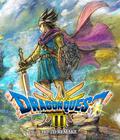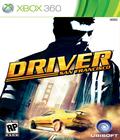The Driver series kicked off with a strong debut, but as the franchise moved on over the years, the games seemed to lose their magic. Perhaps the biggest mistake the franchise ever made was getting out of the car. With Driver: San Francisco, Ubisoft takes the series back to its roots for a sort of virtual reboot. It's not without flaws, but it does make for an enjoyable diversion.
Picking up after the end of Driv3r, Driver: San Francisco establishes that both Tanner and Jericho managed to survive the cliffhanger ending. Tanner is now a cop in San Francisco, while Jericho is imprisoned there. During a prison break, Jericho escapes and critically injures Tanner, all within the opening segment of the game. In fact, the vast majority of Driver: San Francisco occurs inside Tanner's mind, while he's in a coma.
Having the plot of a major release revolve around the mental fantasyland of a coma patient may not be the most traditional storytelling attempt, but Ubisoft Reflections manages to pull it off and use it as the basis for a key gameplay element: the new Shift mechanic.
Shift allows Tanner to jump out of his body by zooming out on the city map and then jump into almost any other car on the street simply by zooming in. If you've ever seen a movie where the camera starts out high in the sky and then zooms down until it has centered on a single person, that's exactly what the effect is like. The Shift ability gives you an uncanny amount of access to the virtual San Francisco, but you can't rely on it 100% of the time — mostly because time doesn't stop while you're Shifting; it only slows down.
Initially, most players will likely use Shift simply as a means of quickly trying out new cars. Let's face it: Most driving games give you crappy cars at the start and make you work your way up to get nicer rides. Driver: San Francisco is no exception; however, if you see a ride you want to try out on the street, a joyride is just a Shift away.
Aside from joyriding, one of primary reasons for Shift is giving the player the ability to use the environment as a weapon. For example, if you're trying to escape from the cops, one option is to jump into opposing traffic and smash into your pursuers head-on, stopping them cold. Another option would be to grab a bus and use it to block two lanes of traffic.
When you're outside of the body you're supposed to be controlling, the AI takes over for you, but it's not always effective. For example, in some races, you need to ensure that both of your team members finish in first and second place. You can get the first car in the lead, Shift into the second and get it to the front of the pack, only to find that the other car is no longer in the lead and has instead fallen to third or fourth place. Really, about the only time the AI is truly effective is when it is controlling cop cars that are trying to take you out.
One issue with Driver: San Francisco that takes a little getting used to is the tendency of all the cars to oversteer by a noticeable amount. Take just about any turn at speed, and expect your rear end to come loose, making it very easy to drop into a spin. While this may be the way some of these cars handle in real life, it's not the best introduction to a game that emphasizes movie-style, balls-to-the-wall driving. Full on, Burnout-style arcade handling would have been much preferred.
Speaking of crashes, Driver: San Francisco loves to show off your handiwork with a slow-motion, crash-cam replay. It looks good but can be ill-timed because the game doesn't stop running while you're in replay mode. This doesn't matter most of the time, but it can occasionally lead to unintended consequences.
Sadly, the virtual San Francisco seen in-game is nothing like the real city. From a gameplay perspective, this isn't a huge deal, but given that the game is set there (doubly so since Ubisoft's North American office is based in the city), a token attempt at realism would have been nice. They didn't even get the city's iconic Bay Bridge correct, let alone any of the major roads.
Completing the story mode in Driver: San Francisco will take most players about 8-10 hours of time, but focusing exclusively on the campaign skips a good deal of content. There are a number of optional side missions scattered about San Francisco that can be completed at any time — including after you have completed the story. It essentially turns the game into one big free roam mode. For those who want another stab at the adventure, there is even a new game plus option.
Driver: San Francisco was originally designed to use Ubisoft's Uplay Passport system (similar to EA's online pass) to lock out online multiplayer and the film director from anyone who purchased the game used, but due to a printing error, the company decided to make the passport free for all. New or used, nothing is locked out.
The film director mode is a feature that allows you to edit the camera setup on a recently played sequence and then save the movie locally or upload it to share with others. Film director requires a hard drive, so it won't function on Xbox 360 Arcade systems.
Multiplayer is supported locally via split-screen or online via Xbox Live and PSN. Local play offers competitive, co-op and free drive play. Co-op centers around three specific missions designed for multiplayer. It does not allow you to play through the story with a partner.
Online multiplayer offers up 11 different modes, most of which are based on the mission types found within the main game. Classic races (where the Shift mechanic is disallowed) are available, but they are the minority. The majority of online modes allow both Shift as well as the use of weapons. Unfortunately, it is the latter that causes a bit of an issue.
For some reason, the developers chose to require players to unlock both the online modes and online weapons via gameplay. Granted, it doesn't take a huge time investment, but it can be frustrating for a new player to jump in and be matched up with higher-level players that already have all the goodies at their disposal. Ubisoft's matchmaking service doesn't seem to account for this. There is also no option to create a public match (you can only create private matches if you already have a party set up), so there isn't even a way to manually filter out higher- or lower-level players. Performance online was a mixed bag, with matches either performing flawlessly or watching other players randomly jump back and forth on-screen due to lag.
Given the franchise history, Driver: San Francisco is a surprisingly fresh take on a series that many thought dead and buried. It may not be perfect, but Driver: San Francisco offers up a solid amount of content along with a good variety of gameplay to keep you busy. What it loses in polish, it more than makes up for in value.
Score: 7.5/10
Editor's note: Want to check out Driver: San Francisco for yourself? Then be sure to grab the single-player demo as well as the multiplayer demo on Xbox Live. Both demos are also available on PSN.
More articles about Driver: San Francisco












 Gamers play as Detective John Tanner on a relentless manhunt for crime lord Charles Jericho through the hills of the City by the Bay. With its timeless setting, unique car handling and renewed playability, and over 100 licensed vehicles, Driver San Francisco will revitalize the classic free-roaming, cinematic car chase experience.
Gamers play as Detective John Tanner on a relentless manhunt for crime lord Charles Jericho through the hills of the City by the Bay. With its timeless setting, unique car handling and renewed playability, and over 100 licensed vehicles, Driver San Francisco will revitalize the classic free-roaming, cinematic car chase experience.








































